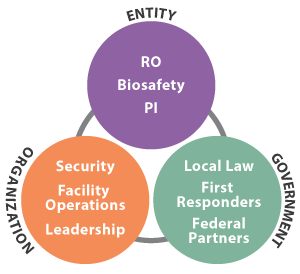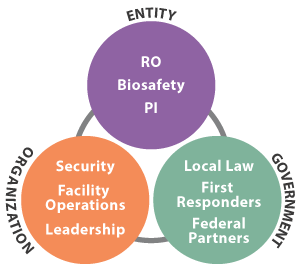Source: https://www.cpsc.gov/Recalls/2022/Wa...s-Investigated
Walmart Recalls Better Homes and Gardens Essential Oil Infused Aromatherapy Room Spray with Gemstones Due to Rare and Dangerous Bacteria; Two Deaths Investigated
Name of Product:
Better Homes and Gardens Essential Oil Infused Aromatherapy Room Spray with Gemstones
Hazard:
Tests conducted by the Centers for Disease Control and Prevention (CDC) determined that a bottle of the room spray contained the rare and dangerous bacteria Burkholderia pseudomallei which causes melioidosis, a condition that is difficult to diagnose and can be fatal. CDC has been investigating a cluster of four confirmed cases of melioidosis including two deaths in the U.S. Though the source of these four infections has not been confirmed by CDC, the bottle with the same type of bacteria was found in the home of one of the melioidosis decedents.
Remedy: Refund
Recall Date:
October 22, 2021
Units:
About 3,900
Recall Details
Description:
Washington, D.C. – Walmart is recalling about 3,900 bottles of Better Homes and Gardens-branded- Essential Oil Infused Aromatherapy Room Spray with Gemstones in six different scents due to the possible presence of a rare and dangerous bacteria and risk of serious injury and death.
The Centers for Disease Control and Prevention (CDC) tested a version of the product and determined that it contained the dangerous bacteria Burkholderia pseudomallei which causes melioidosis. CDC has been investigating a cluster of four cases of melioidosis in the U.S., including two deaths. Cases were reported in Kansas, Minnesota, Texas and Georgia, including a child fatality.
Samples taken by CDC from a bottle of the Better Homes and Gardens Lavender & Chamomile aromatherapy room spray in the home of the Georgia victim found the presence of these dangerous bacteria.
The aromatherapy room spray was sold at about 55 Walmart stores nationwide and online at walmart.com from February 2021 through October 2021 for about $4. “Better Homes and Gardens Aromatherapy,” is printed on the label on the front of the 5-ounce glass bottle. The aromatherapy was sold with a pump spray nozzle in the following scents and product numbers:
84140411420 Better Homes and Gardens (BHG) Gem Room Spray Lavender & Chamomile
84140411421 Better Homes and Gardens (BHG) Gem Room Spray Lemon and Mandarin
84140411422 Better Homes and Gardens (BHG) Gem Room Spray Lavender
84140411423 Better Homes and Gardens (BHG) Gem Room Spray Peppermint
84140411424 Better Homes and Gardens (BHG) Gem Room Spray Lime & Eucalyptus
84140411425 Better Homes and Gardens (BHG) Gem Room Spray Sandalwood and Vanilla
Walmart has stopped sale of the product. The product was made in India.
Consistent with CDC’s guidance, consumers are urged to:
Remedy:
Customers will also receive a $20 Walmart Gift Card upon return.
Consistent with CDC recommendations, consumers should immediately stop using the recalled room spray, double bag the bottle in clean, clear zip-top resealable bags, place it in a small cardboard box and return it to any Walmart store for a full refund. Do not open the bottle. Do not attempt to throw away or dispose of the bottle.
When handling the product or cleaning contaminated surfaces, please follow the CDC guidance below.
Incidents/Injuries:
CDC has been investigating a cluster of four cases of melioidosis in the U.S., including two deaths. Cases were reported in Kansas, Minnesota, Texas and Georgia, including a child fatality.
Sold At
The aromatherapy room spray was sold at about 55 Walmart stores nationwide and online at walmart.com from February 2021 through October 2021 for about $4.
Manufactured In:
India
Recall number:
22-007
Walmart Recalls Better Homes and Gardens Essential Oil Infused Aromatherapy Room Spray with Gemstones Due to Rare and Dangerous Bacteria; Two Deaths Investigated
Name of Product:
Better Homes and Gardens Essential Oil Infused Aromatherapy Room Spray with Gemstones
Hazard:
Tests conducted by the Centers for Disease Control and Prevention (CDC) determined that a bottle of the room spray contained the rare and dangerous bacteria Burkholderia pseudomallei which causes melioidosis, a condition that is difficult to diagnose and can be fatal. CDC has been investigating a cluster of four confirmed cases of melioidosis including two deaths in the U.S. Though the source of these four infections has not been confirmed by CDC, the bottle with the same type of bacteria was found in the home of one of the melioidosis decedents.
Remedy: Refund
Recall Date:
October 22, 2021
Units:
About 3,900
Recall Details
Description:
Washington, D.C. – Walmart is recalling about 3,900 bottles of Better Homes and Gardens-branded- Essential Oil Infused Aromatherapy Room Spray with Gemstones in six different scents due to the possible presence of a rare and dangerous bacteria and risk of serious injury and death.
The Centers for Disease Control and Prevention (CDC) tested a version of the product and determined that it contained the dangerous bacteria Burkholderia pseudomallei which causes melioidosis. CDC has been investigating a cluster of four cases of melioidosis in the U.S., including two deaths. Cases were reported in Kansas, Minnesota, Texas and Georgia, including a child fatality.
Samples taken by CDC from a bottle of the Better Homes and Gardens Lavender & Chamomile aromatherapy room spray in the home of the Georgia victim found the presence of these dangerous bacteria.
The aromatherapy room spray was sold at about 55 Walmart stores nationwide and online at walmart.com from February 2021 through October 2021 for about $4. “Better Homes and Gardens Aromatherapy,” is printed on the label on the front of the 5-ounce glass bottle. The aromatherapy was sold with a pump spray nozzle in the following scents and product numbers:
84140411420 Better Homes and Gardens (BHG) Gem Room Spray Lavender & Chamomile
84140411421 Better Homes and Gardens (BHG) Gem Room Spray Lemon and Mandarin
84140411422 Better Homes and Gardens (BHG) Gem Room Spray Lavender
84140411423 Better Homes and Gardens (BHG) Gem Room Spray Peppermint
84140411424 Better Homes and Gardens (BHG) Gem Room Spray Lime & Eucalyptus
84140411425 Better Homes and Gardens (BHG) Gem Room Spray Sandalwood and Vanilla
Walmart has stopped sale of the product. The product was made in India.
Consistent with CDC’s guidance, consumers are urged to:
- Stop using this product immediately. Do not open the bottle. Do not attempt to throw away or dispose of the bottle.
- Double bag the bottle in clean, clear zip-top resealable bags and place in a small cardboard box. Return the bagged and boxed product to a Walmart store.
- Wash sheets or linens that the product may have been sprayed on using normal laundry detergent and dry completely in a hot dryer, bleach can be used if desired.
- Wipe down counters and surfaces that might have been exposed to the spray with an undiluted disinfectant cleaner.
- Minimize handling of the product and wash hands thoroughly after handling the bottle or linens. Wash hands thoroughly after removing gloves.
- If you have used the product within the last 21 days and experience fever or other symptoms, seek medical care and tell your doctor about the product exposure. Your doctor may recommend that you get antibiotics (post exposure prophylaxis) to prevent infection.
Remedy:
Customers will also receive a $20 Walmart Gift Card upon return.
Consistent with CDC recommendations, consumers should immediately stop using the recalled room spray, double bag the bottle in clean, clear zip-top resealable bags, place it in a small cardboard box and return it to any Walmart store for a full refund. Do not open the bottle. Do not attempt to throw away or dispose of the bottle.
When handling the product or cleaning contaminated surfaces, please follow the CDC guidance below.
Incidents/Injuries:
CDC has been investigating a cluster of four cases of melioidosis in the U.S., including two deaths. Cases were reported in Kansas, Minnesota, Texas and Georgia, including a child fatality.
Sold At
The aromatherapy room spray was sold at about 55 Walmart stores nationwide and online at walmart.com from February 2021 through October 2021 for about $4.
Manufactured In:
India
Recall number:
22-007


Comment